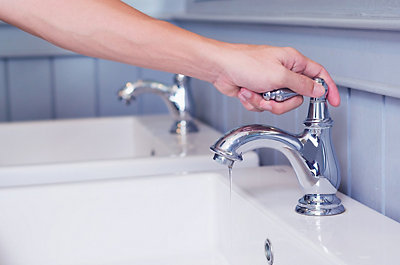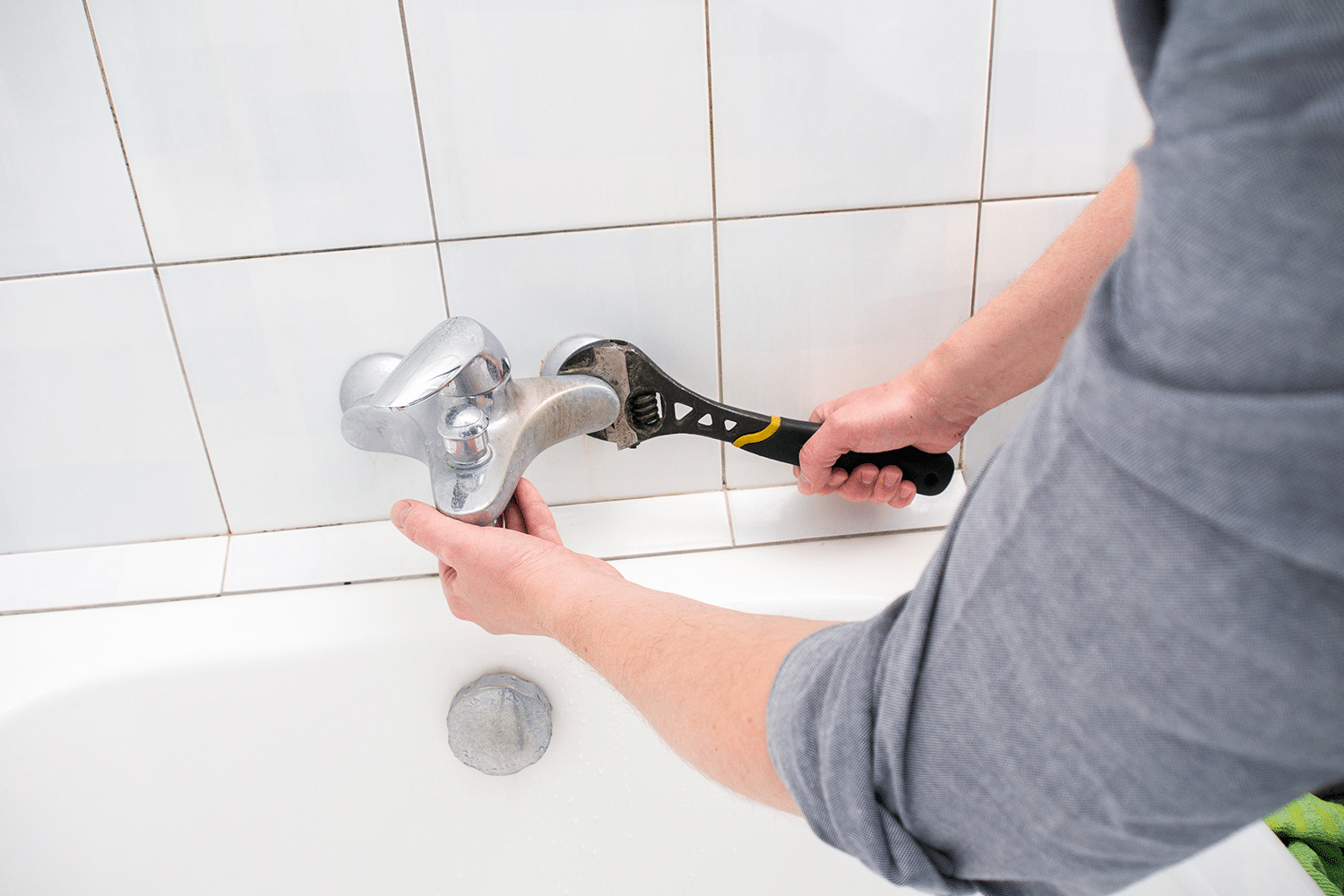We've unearthed the article pertaining to How to Fix a Dripping or Leaky Faucet listed below on the net and thought it made perfect sense to talk about it with you on this site.

Trickling faucets may feel like a minor aggravation, however their effect surpasses simply the annoyance of the noise. From wasting water to incurring unneeded monetary expenses and health threats, disregarding a trickling tap can result in different repercussions. In this short article, we'll explore why it's crucial to address this usual household issue promptly and effectively.
Wastefulness of Water
Ecological Impact
Dripping taps contribute substantially to water waste. According to the Environmental Protection Agency (EPA), a solitary faucet trickling at one drip per second can waste greater than 3,000 gallons of water annually. This not just stress water sources however also impacts communities and wild animals depending on them.
Step-by-Step Guide to Fixing a Dripping Faucet
Devices Required
Before trying to repair a trickling faucet, gather the necessary devices, consisting of an adjustable wrench, screwdrivers, replacement components (such as washers or cartridges), and plumber's tape.
Usual Tap Issues and Their Solutions
Identify the kind of faucet and the specific problem causing the drip. Typical problems include damaged washers, rusty valve seats, or damaged O-rings. Refer to manufacturer instructions or on-line tutorials for detailed guidance on fixings.
Financial Prices
Increased Water Costs
Past the environmental impact, trickling faucets can pump up water expenses significantly. The accumulated waste with time equates right into greater utility expenses, which can have been prevented with timely repair work.
Potential Home Damage
Additionally, long term dripping can cause harm to components and surfaces surrounding the faucet. Water build-up can create discoloration, rust, and also structural issues if left ignored, causing extra fixing costs.
Wellness Worries
Mold And Mildew and Mildew Development
The consistent visibility of moisture from a trickling tap produces a suitable setting for mold and mold growth. These fungis not only compromise interior air quality but likewise posture health dangers, specifically for people with respiratory problems or allergies.
Waterborne Conditions
Stagnant water in trickling faucets can become a breeding ground for germs and various other microorganisms, boosting the risk of waterborne conditions. Contaminants such as Legionella germs prosper in stagnant water, potentially leading to significant illnesses when consumed or breathed in.
Do it yourself vs. Expert Repair work
Advantages and disadvantages of DIY Repair
While some may attempt to fix a trickling tap themselves, DIY repair work include their own set of difficulties. Without correct knowledge and devices, do it yourself efforts can exacerbate the concern or cause incomplete repair work, prolonging the issue.
Benefits of Employing a Professional Plumber
Hiring a professional plumber guarantees that the underlying root cause of the leaking faucet is addressed efficiently. Plumbings have the competence and devices to identify and fix faucet concerns successfully, saving time and lessening the risk of further damage.
Ecological Duty
Private Contribution to Preservation
Taking responsibility for fixing leaking faucets aligns with more comprehensive initiatives toward water conservation and ecological sustainability. Every person's activities collectively make a considerable effect on maintaining valuable resources.
Sustainable Living Practices
By focusing on timely repair work and taking on water-saving behaviors, people contribute to lasting living methods that benefit both existing and future generations.
Preventive Measures
Normal Maintenance Tips
To stop leaking faucets, do routine upkeep such as cleansing aerators, evaluating for leaks, and replacing damaged components quickly. In addition, consider setting up water-saving tools or upgrading to much more reliable fixtures.
Value of Prompt Services
Dealing with leaking taps as quickly as they're noticed prevents further water wastefulness and possible damages, inevitably conserving both water and cash in the future.
Influence On Residential Property Worth
Perception of Well-Maintained Property
Maintaining a home in good condition, including dealing with upkeep problems like leaking taps, enhances its viewed value and worth amongst potential customers or occupants.
Influence on Resale Value
Characteristics with well-kept plumbing fixtures, consisting of faucets, command greater resale values in the property market. Dealing with trickling faucets can add to a positive perception during residential or commercial property evaluations and arrangements.
Conclusion
Attending to a trickling faucet exceeds plain convenience; it's a necessary step toward saving water, lowering financial expenses, and securing wellness and property. Whether through do it yourself repairs or professional assistance, taking action to repair dripping faucets is a small yet impactful way to advertise accountable stewardship of resources and contribute to a healthier, more lasting future.
How to Fix a Leaky Faucet: Step-by-Step Repair Guide
A leaky faucet may seem like a simple annoyance, but if it's not fixed promptly, that leak could cost hundreds to potentially thousands. From water damage to mold, mildew, and high water bills, even a tiny leak can be catastrophic if left unattended. Damage like this can even affect the overall value of your home, so it's important to take the right approach for leaky faucet repair. You may need the help of a plumber in some cases, but we've got a few tips you can try on how to fix a leaky faucet before calling the pros.
Four Faucet Types
When you're learning how to fix a leaky faucet, the first step is knowing what kind of faucet you're working with! There are four common types.
Cartridge Faucets
Cartridge faucets come in one- or two-handled varieties. In one-handled cartridge faucets, hot and cold water combines in a single cartridge. In the two-handled versions, hot and cold water are controlled separately and mixed in the faucet.
Ball Faucets
Ball faucets have a single lever you push up and down to adjust the pressure and rotate to change the temperature. A slotted metal ball controls the amount of water allowed into the spout.
Compression Washer Faucets
They're the oldest type of faucet, but they're still used in many homes — especially older ones. Compression faucets have two separate handles that, when turned, raise or lower the washer that seals a water valve. This valve stops water from flowing through the faucet when it is turned off.
Disc Faucets
Disc faucets rarely need to be repaired due to their maintenance-free design. The water flow is controlled by two discs — the upper one raises and lowers against a fixed lower disc, creating a watertight seal. If your disc faucet starts leaking, you may need to replace the seals or clean residue buildup from the inlets.
Fixing a Leaky Faucet
Step 1: Turn Off the Water
Whether you're learning how to fix a leaky bathtub faucet or how to fix a leaky kitchen faucet, always turn off the water supply to your working area when you're fixing a leak. The last thing you want is a flood added to your list of things to fix.
Look for the shutoff valves below your sink or around the tub and turn them clockwise to stop the water flow. If your faucet doesn't have shutoff valves, you may need to turn off the water for the whole house. Check to make sure it's off by turning the faucet on. If nothing comes out, you're ready to start the repair.
Step 2: Take Apart the Faucet
How you disassemble your faucet depends on the type of fixture you have. You can use a flathead screwdriver to remove the caps on top of the handle or handles for cartridge and compression faucets. Inside, you should see handle screws. Unscrew these with a screwdriver to remove the handle.
Disc- and ball-style faucets will typically have an inlet screw near the handle, and removing that will reveal the interior of the faucet.
Detach the Valve Stem
For cartridge- and compression-style faucets, you'll see the inner valve stem or cartridge once you remove the faucet handles. If you have a compression faucet, unscrew the brass valve stem. If you have a cartridge faucet, pull out the cartridge. If your cartridge has been in place for a while, it may require some tools or extra force to remove it due to mineral deposits.
Examine and Replace Parts
Once you've removed the parts, check them out to confirm what needs to be replaced. You may see corroded rubber washers, O-rings, stems, or cartridges. On a ball-style faucet, check the seats and springs for damage.
If you need to repair a leaky disc faucet, check the inlet and seals on the lower disc.
Once you determine what parts must be replaced, visit your local hardware store. Bring the damaged parts with you to ensure you can purchase the correct components to replace them.
Clean Valves and Faucet Cavity
If you've removed a stem or cartridge, you may notice mineral buildup in the faucet's threads. Use white vinegar to clean the valve seat by soaking it for a few minutes, then scrub it away with a soft toothbrush and rinse with warm water. You can also clean the interior of the faucet in the same way.
Reassemble the Faucet
Once your faucet is cleaned and the required parts have been replaced, it's time to reassemble it. Put the pieces back together and slowly turn the water supply back on. Doing this slowly is crucial because too much initial water pressure can damage the new hardware you've just installed.
https://homewarranty.firstam.com/blog/how-to-fix-leaky-faucet

Do you really like reading about ? Leave a remark below. We would be delighted to hear your opinion about this blog entry. Hoping that you come back again in the near future. For those who enjoyed our article kindly remember to share it. Thanks a lot for your time. Come back soon.